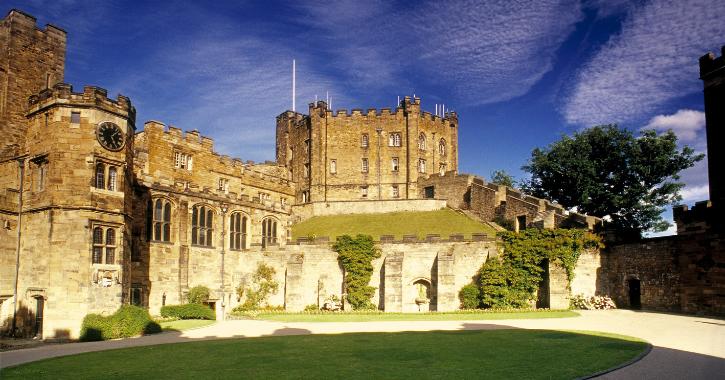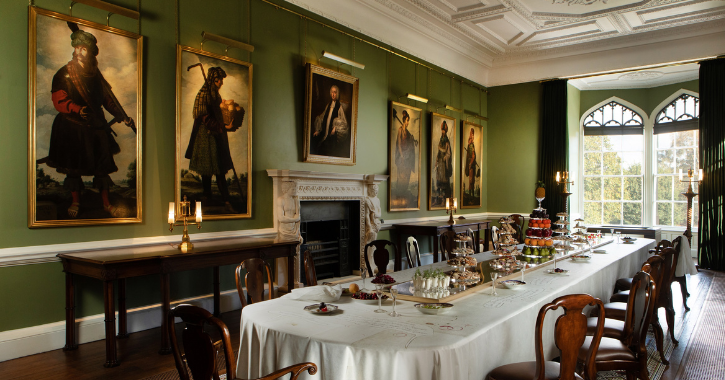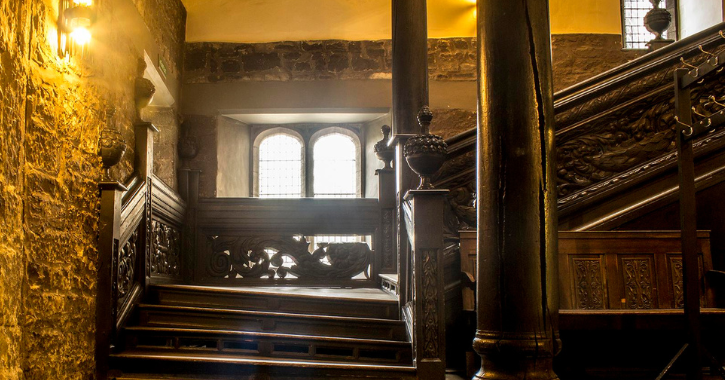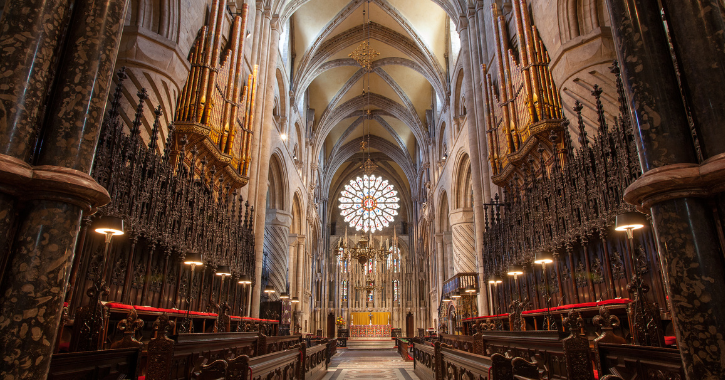Ever wondered why Durham is called, ‘Land of the Prince Bishops’? Journey back to medieval times to find out how it all began.
When William the Conqueror came to the throne, ensuring stability in the North was very challenging. The king introduced a cunning political tactic: the Bishop of Durham would be given additional powers in return for their loyalty. From 1075, they had the ability to not only issue their own coins and levy taxes but also raise an army and establish their own legal court.
Defending the Scottish border was also a major part of the role. The Bishop became a, ‘Prince Bishop’ although this term was not in use until the nineteenth century. As you walk the Northern Saints Trails, you can delve into the past of some mighty Prince Bishops and find sights across Durham where they have left their mark.
.png)
Ranulf Flambard - Bishop 1099-1128
Did you know that one of Durham’s favourite photo spots is connected to Bishop Flambard? Under his instruction, Durham’s first stone bridge was built around 1120 – the original Framwellgate Bridge. On your walk, you can take a pause on the newer bridge for fantastic views of Durham City! Flambard was a controversial figure, who was seen as greedy but also a great builder. He was the chief financial administrator for William II.
The king was notorious for imposing large taxes to finance his campaigns abroad and the Bishop was an easy person to blame. The new king, Henry I, accused him of extortion. He became the first prisoner of the Tower of London and the first escapee! It is said he hid rope in a barrel of wine and gave wine to the guards to get them drunk!

Cuthbert Tunstall – Bishop 1530-1559
Make a stop to do a tour of Durham Castle . Here you can find out about the fascinating life of Cuthbert Tunstall, a high-profile Catholic who saw the reign of five Tudor monarchs. He was the son of a northern knight called Sir Thomas Tunstall. Can you spot the family coat of arms in the courtyard? The three combs on the crest represent a family ancestor, who was the barber of William the Conqueror!
Cuthbert was an advisor to Catherine of Aragon during her divorce trials but in the end chose to support Henry VIII, although after his homes were searched for suspicious materials and some of his friends were executed! Inside the castle, you can wander around the intricate Tunstall Chapel and the Tunstall Gallery, named after this Bishop.

Richard Trevor - Bishop 1752 to 1771
Make sure you visit Auckland Palace too. It was once the residence of Prince Bishops such as Bishop Trevor. He was a strong supporter of the Jewish community and was a sponsor of the Jewish Naturalisation Act of 1753, which would give Jewish immigrants the same rights as those born in England. However, the act was repealed in 1755.
To show his sympathy for the Jews, the Bishop bought twelve of the thirteen magnificent paintings of Jacob and His Twelve Sons by Francisco de Zurbarán. The price was just £124 but the collection is now worth £15 million! You can admire them in The Long Dining Room of the palace. There is a facsimile of Benjamin and the original is at The Spanish Gallery .

John Cosin – Bishop 1660 – 1672
At Durham Castle you can also find out about Cosin’s influence. He undertook a major refurbishment of the place and one of his incredible additions was the Black Stairs. Made of oak, it was designed as a flying staircase, meaning it had no vertical supports and its weight was entirely supported by the walls! Not surprisingly, the staircase started tilting towards the centre and wooden columns were added. The steps were deliberately shallow and wide, reflecting the Bishop’s flamboyant nature. With low steps combined with long robes, Cosin would have appeared to be floating down the stairs.
Spot the carved pineapples! This fruit was rare and exotic in the seventeenth century. Why not go to Cosin’s Library at Palace Green as well? It was founded by the man in 1669 from his private collection and is still in its original building. It is the earliest surviving public library in the North East.

William Van Mildert - Bishop 1826-1836
When you explore Durham Cathedral, which has been a place of pilgrimage since its founding, look out for a marble statue of Van Mildert, the last Prince Bishop. He hosted one of the final grand ceremonial events at Durham Castle in October 1827. Notable guests at the feast in the Great Hall included the Duke of Wellington and author Sir Walter Scott. The Bishop’s major legacy is founding Durham University in 1832.
Check out the Northern Saints Trails website to find the walking routes, which have connections to the Prince Bishops!
Related
Comments
Nobody has commented on this post yet, why not send us your thoughts and be the first?
.png)

 to add an item to your Itinerary basket.
to add an item to your Itinerary basket.









